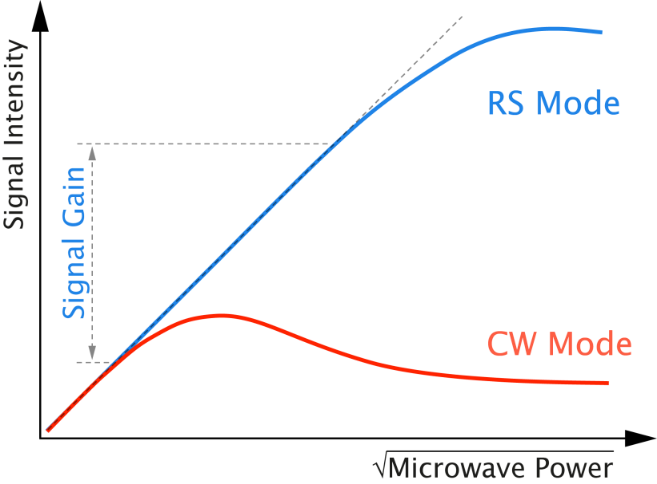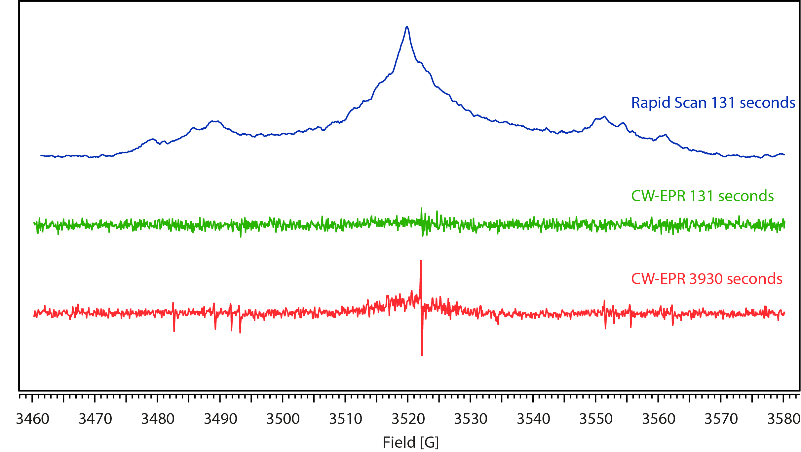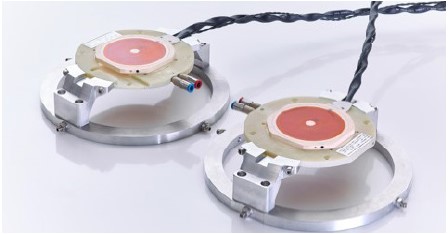Bruker Rapid Scan EPR: a new era in sensitivity
With the introduction of the Rapid Scan technology Bruker has made another leap in sensitivity enhancement in EPR.
While conventional EPR scans the magnetic field with a speed of typically 1G/s, in Rapid Scan the scan speed in in order of 10 MG/s. As a result of the high speed the time it takes to sweep through the EPR line is very short, thus avoiding that the line can saturate. A consequence is that the EPR signal amplitude is much higher because saturation is circumvented. Another significant advantage is that with Rapid Scan directly the absorption spectrum is detected, while it is the derivative in CW-EPR which has low sensitivity for broad lines.
EPR active centers in diamond are well known to saturate already at very little microwave power. Here we demonstrate a gain in measuring time of about a factor 30 by Rapid Scan. This opens new experimental horizons for samples and properties becoming accessible to EPR.



